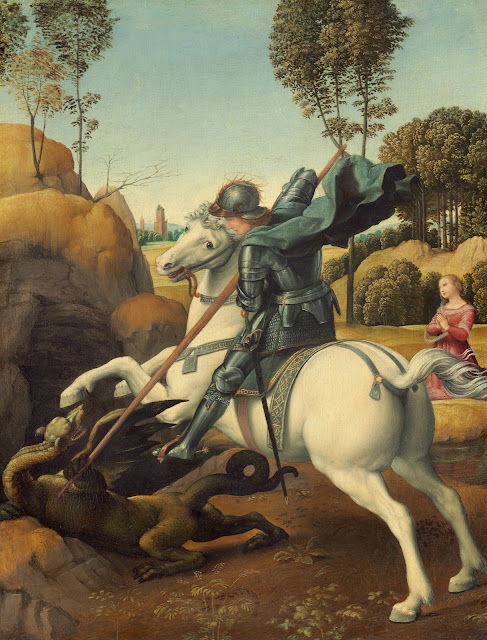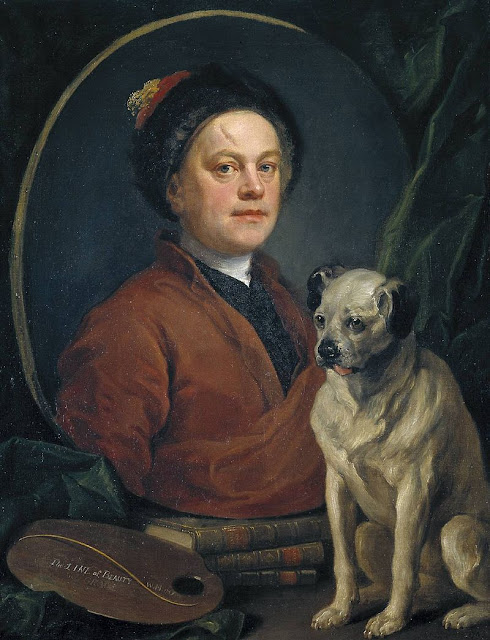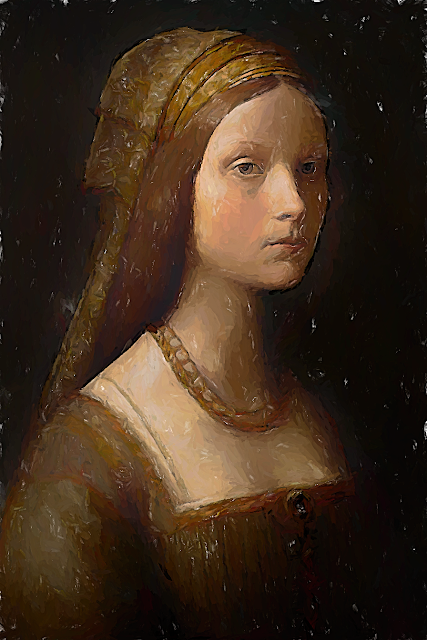Saint George And The Dragon By Raphael
Saint George and the Dragon by Raphael: A Timeless Masterpiece
In the vast and illustrious world of art, few names shine as brightly as that of Raphael, the Italian High Renaissance painter whose works have transcended time and continue to captivate audiences worldwide. Among his many masterpieces, "Saint George and the Dragon" stands as a testament to his unparalleled talent and artistic vision. Painted around 1506, this iconic piece not only tells a timeless tale but also showcases Raphael's impeccable technique and ability to capture the human spirit. In this article, we will delve into the intricacies of "Saint George and the Dragon," exploring its history, symbolism, and enduring significance in the world of art.
The Historical Context
Raphael, born Raffaello Sanzio da Urbino in 1483, was a prominent figure in the Italian High Renaissance, a period marked by a revival of interest in classical art and culture. During this era, artists like Leonardo da Vinci and Michelangelo were pioneering new artistic techniques and perspectives, and Raphael was no exception. His early career was heavily influenced by the works of his contemporaries, but he quickly developed his own distinctive style that combined classical harmony with a sense of grace and idealization.
"Saint George and the Dragon" was created during this transformative period in Raphael's career. It's important to note that Raphael's interpretation of the Saint George legend was not entirely novel; rather, it was a reflection of the broader cultural and artistic trends of the time. The tale of Saint George, a Christian martyr who slew a fearsome dragon to rescue a princess, symbolized the triumph of good over evil, a theme that resonated deeply with Renaissance Europe.
The Composition
At first glance, "Saint George and the Dragon" appears to be a straightforward narrative painting. The central focus is, of course, Saint George, portrayed as a valiant and noble knight. He is depicted in the midst of a fierce battle with a monstrous dragon, poised to strike the killing blow with his lance. The damsel in distress, the princess he is saving, gazes upon the scene from a distance, her expression a mix of fear, hope, and admiration.
Raphael's mastery becomes evident as we look closer at the painting's composition. The dynamic and harmonious arrangement of the figures draws the viewer's eye toward the central conflict. Saint George's flowing red cape and the dragon's sinuous, coiling body create a sense of movement and tension. The lush landscape in the background adds depth to the scene, contrasting the brutality of the fight with the serenity of nature.
Symbolism and Allegory
Beyond its aesthetic beauty, "Saint George and the Dragon" is rich in symbolism and allegory. Raphael uses the age-old legend to convey deeper meanings that were characteristic of Renaissance art. Saint George, in this context, symbolizes the Christian faith and the triumph of good over evil. His chivalrous act represents the ideals of bravery and honor upheld during the Renaissance.
The dragon, on the other hand, can be interpreted in several ways. It is not merely a mythical creature but also a symbol of the challenges and temptations that one faces in life. By slaying the dragon, Saint George embodies the Christian virtues of courage and righteousness in the face of adversity.
The princess, often seen as the personification of virtue or salvation, looks on with a mixture of emotions. Her presence serves to highlight the dichotomy between the chaos of the dragon and the order and heroism represented by Saint George. In this sense, she symbolizes the reward of righteousness and the hope of salvation.
Raphael's innovative use of allegory and symbolism in "Saint George and the Dragon" was a testament to his intellectual depth and his ability to convey complex ideas through art.
Artistic Techniques
Raphael's technical brilliance shines through in every aspect of "Saint George and the Dragon." His meticulous attention to detail, coupled with his keen understanding of human anatomy and emotion, make the characters in the painting come to life.
One notable aspect of Raphael's technique is his use of chiaroscuro, the interplay of light and shadow. He skillfully renders Saint George's armor and the dragon's scales to create a three-dimensional effect, giving the figures a palpable presence. The contrast between light and shadow also adds drama to the scene, intensifying the sense of conflict and heroism.
Raphael's mastery of color is another hallmark of this masterpiece. The vibrant red of Saint George's cape not only draws the viewer's eye but also symbolizes his courage and passion. The soft, earthy tones of the landscape provide a harmonious backdrop that complements the central drama.
Legacy and Influence
"Saint George and the Dragon" is more than just a painting; it is a testament to Raphael's enduring influence on the art world. During his lifetime, Raphael was regarded as a paragon of artistic excellence, and his works inspired countless artists who followed in his footsteps.
The composition and themes of this painting have influenced generations of artists, from Baroque to Romantic to Symbolist painters. It has inspired adaptations, reinterpretations, and variations in art, literature, and even popular culture. Raphael's innovative blending of narrative, symbolism, and technical excellence in "Saint George and the Dragon" continues to serve as a touchstone for artists seeking to convey timeless messages through their work.
"Saint George and the Dragon" by Raphael is a masterpiece that transcends time and culture. Its captivating narrative, rich symbolism, and technical brilliance continue to inspire and enchant viewers today, just as it did when Raphael first put brush to canvas over 500 years ago. This iconic painting stands as a testament to the genius of one of the greatest artists in history and reminds us of the enduring power of art to convey profound ideas and emotions.









